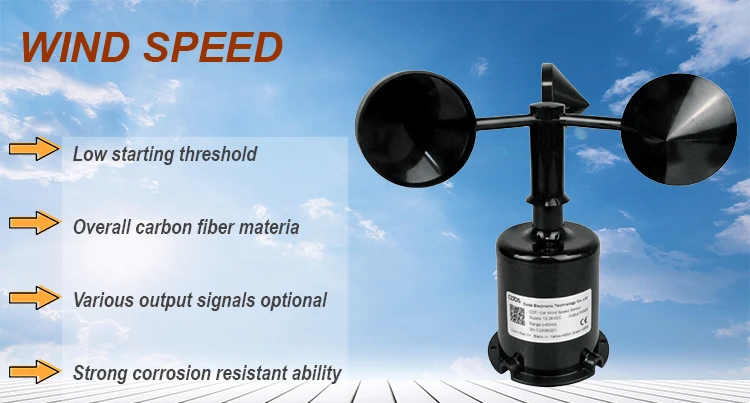
# Anemometer: Instrument to Measure Wind Speed
## What is an Anemometer?
An anemometer is a meteorological instrument specifically designed to measure wind speed. This essential tool plays a crucial role in weather forecasting, aviation, marine operations, and various scientific research applications.
## How Does an Anemometer Work?
The most common type of anemometer, the cup anemometer, consists of three or four hemispherical cups mounted on horizontal arms that rotate around a vertical axis. As wind blows, the cups rotate at a speed proportional to the wind velocity. The rotation is then converted into an electrical signal that can be interpreted as wind speed.
## Types of Anemometers
### 1. Cup Anemometers
The traditional design with rotating cups remains one of the most reliable methods for wind speed measurement.
### 2. Vane Anemometers
These combine a propeller with a tail vane to measure both wind speed and direction simultaneously.
### 3. Hot-Wire Anemometers
Using electrically heated wires, these measure wind speed by detecting changes in electrical resistance caused by cooling from wind flow.
### 4. Ultrasonic Anemometers
These advanced instruments use ultrasonic sound waves to measure wind speed and direction without moving parts.
## Applications of Anemometers
Anemometers serve numerous important functions across various industries:
- Weather stations for meteorological data collection
- Aviation for airport wind monitoring
- Marine navigation and safety
- Wind energy assessment for turbine placement
- Building ventilation system evaluation
- Environmental research and pollution monitoring
## Choosing the Right Anemometer
When selecting an anemometer, consider these factors:
– Measurement range required
– Accuracy needed for your application
– Environmental conditions (temperature, humidity)
– Portability requirements
– Data recording capabilities
– Budget constraints
## Maintenance and Calibration
To ensure accurate measurements, anemometers require regular maintenance:
- Clean the instrument regularly to prevent debris buildup
- Check for mechanical wear in moving parts
- Verify calibration against known standards
- Protect from extreme weather when not in use
- Store properly when not in operation
## The Future of Wind Speed Measurement
Technological advancements continue to improve anemometer design, with developments in:
– Wireless connectivity for remote monitoring
– Miniaturization for portable applications
– Integration with other environmental sensors
– Improved durability for harsh conditions
– Enhanced data processing capabilities
As our understanding of atmospheric dynamics grows, the humble anemometer remains an indispensable tool for measuring wind speed across countless applications.
Keyword: instrument measure wind speed